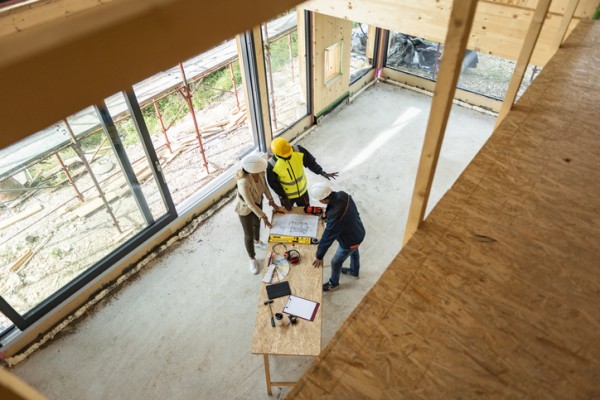
Building or renovating a home is a detailed process, and even with the most careful planning, changes can crop up. These changes—whether initiated by you or your builder—are known as variations. A variation is any amendment to your original building contract that affects the scope of work, materials, design or cost. While sometimes unavoidable, variations can quickly lead to budget blowouts and project delays if not managed properly.
Understanding what variations are, how they arise and how to prevent them is key to keeping your project on track.
What is a variation?
In simple terms, a variation is a change to what was agreed upon in the original contract. This could be a new request from the homeowner—like upgrading to stone benchtops instead of laminate—or a necessary alteration due to unexpected site conditions or regulation changes. Sometimes the builder might propose a variation to improve outcomes, adjust for supply chain issues or comply with updated code requirements.
Most variations increase the cost and duration of the project, though some may reduce them. Either way, every variation must be documented, costed and approved in writing before any work proceeds.
Types of variations
There are three main types of variations in residential construction. Additive variations involve adding work, materials or features to the build, and usually result in increased costs and longer timelines. Deductive variations are the opposite—they remove part of the original scope and can lead to cost savings. Then there are substitution variations, which swap one product, material or process for another. These are common when preferred items are unavailable or if the builder recommends alternatives.
Why variations happen
Variations are often caused by changes to the design after the contract is signed. A homeowner may decide to reconfigure the kitchen layout, choose a different flooring material or upgrade appliances mid-build. These decisions, while understandable, can disrupt the schedule and require rework.
Another common source of variations is an unclear or incomplete contract. If finishes, fittings or construction details aren’t fully specified from the outset, there’s room for misinterpretation, which can trigger disputes and adjustments.
Sometimes variations are entirely unavoidable. For example, a builder might uncover rock beneath the soil during excavation or find termite damage in a renovation. These kinds of site-related surprises almost always lead to changes in scope.
Other causes include inaccurate cost estimates, supply chain delays or changes in local regulations. Each of these factors can force a project to pivot from the original plan.
How variations are handled in contracts
Most Australian building contracts include a dedicated variation clause. This sets out how and when a variation can be made, how it must be approved and how changes to cost or completion date will be calculated. It also outlines the documentation requirements—such as written descriptions, quotes, builder and owner sign-off—and timeframes for submitting and accepting the changes.
For homeowners, it’s critical to understand your contract’s variation clause before signing. It’s also worth checking whether your builder uses a fixed-price or cost-plus contract, as these influence how variations are priced and billed.
How to avoid unnecessary variations
While some variations are out of your hands, many can be avoided with proper planning and communication. The best way to reduce the likelihood of costly changes is to make as many decisions as possible before construction begins. That means finalising your design, floorplans, and all fixtures and finishes—down to the tapware and tile grout—well ahead of signing the contract.
Working with a builder who offers fixed-price contracts based on fully completed design documentation can also help you avoid budget surprises. These contracts tend to include fewer provisional sums and allowances, which are often the source of cost creep.
Contingency budgeting is another essential step. Even with thorough planning, it’s wise to set aside 5–10% of your total construction budget to cover unexpected changes or site discoveries.
Documentation plays a huge role in keeping variations under control. Every change, no matter how small, should be recorded in writing and include revised costs and timelines. Verbal agreements can lead to disputes later. Many builders now use cloud-based project management platforms, which make it easy to track variations, approvals and updated plans.
Consistent communication with your builder is also crucial. Regular site meetings and updates ensure that both parties stay aligned and can flag potential issues early, before they turn into expensive variations.
Common causes and how to prevent them
| Risk or cause | Prevention strategy |
|---|---|
| Design changes | Finalise design early and use 3D modelling where possible |
| Vague contract scope | Create a detailed, fixed‑price contract |
| Unforeseen site conditions | Conduct thorough site surveys and include contingencies |
| Scope creep | Use written variation approvals and maintain clear scope |
| Poor cost estimates | Use up-to-date pricing and allow for escalation |
| Delayed approvals | Engage authorities early and streamline paperwork |
| Material or regulation changes | Define substitution rules and work with trusted suppliers |
Final thoughts
Variations are an everyday part of construction, but they don’t have to derail your project. By understanding what they are, how they’re handled and how to reduce the likelihood of them occurring, you’ll be in a much stronger position to keep your build on time and within budget.
The best defence against variations is good planning. Choose a reliable builder, lock in your decisions early and make sure your contract is airtight. Keep communication open throughout the build and insist on proper documentation for every change. That way, if a variation does come up, you’ll be ready to handle it with minimal stress.





